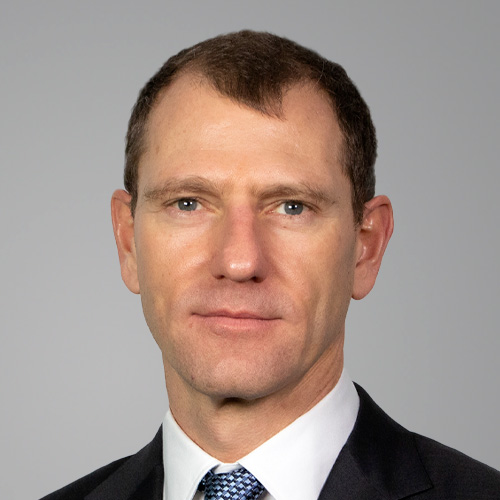Unsere positive Grundhaltung in Bezug auf die Märkte für Unternehmensanleihen im bisherigen Jahresverlauf hat weiterhin Bestand. Grundlage dafür ist unser Makroszenario einer kräftigen und weltweit nachhaltigen Konjunkturerholung.
Die Normalisierung der Verhältnisse in den einzelnen Volkswirtschaften mit zunehmendem Impffortschritt in Kombination mit den starken geld- und fiskalpolitischen Impulsen lässt für die Weltwirtschaft ein höheres Wachstumstempo als vor der Coronakrise erwarten. Vor allem ist zu beobachten, dass sich die konjunkturelle Dynamik auf der Makroebene auch in beeindruckenden Unternehmensgewinnen und einem regionen- und sektorübergreifenden Aufwärtstrend bei den Fundamentaldaten im Unternehmensanleihebereich manifestiert. Dies bestärkt uns in unserer Überzeugung, unsere Investments an diesen Märkten beizubehalten.
In diesem Umfeld ist es möglich, dass Marktsegmente mit höherem Beta überdurchschnittlich abschneiden, so dass es unserer Einschätzung nach zu einer Einengung der Spreads kommen wird. Die Spreads am High Yield-Markt dürften von der fortschreitenden Erholung bei den am härtesten von der Pandemie getroffenen Sektoren profitieren. Gleichzeitig sind wir der Auffassung, dass nachrangige Schuldtitel angesichts der starken Fundamentaldaten des Bankensektors und der stabilen Erträge während der Pandemie eine attraktive Anlagemöglichkeit darstellen.
Was die Gewinnentwicklung bei den Unternehmen anbelangt, konnten die Gesellschaften im US-Investment Grade-Segment in der Berichtssaison für das 2. Quartal 2021 mit Rekordergebnissen glänzen. Etwa 85% dieser Unternehmen haben die Gewinnerwartungen übertroffen.
Die Firmen verzeichneten einen starken Anstieg bei Umsatz und Gewinn im Vergleich zum 2. Quartal 2020, die nun im Durchschnitt auch deutlich über dem (Vorkrisen-) Niveau des 2. Quartals 2019 liegen. Getragen wird der Aufschwung vor allem von zyklischen Sektoren wie Energie, Grundstoffe, Automobile und Industrie, die die größten Steigerungsraten im Vorjahresvergleich aufweisen. Unter Bonitätsgesichtspunkten haben steigende Gewinne zusammen mit einem fortgesetzten vorsichtigen Bilanzmanagement, insbesondere in den von der Pandemie am stärksten gebeutelten Sektoren, zu einem Rückgang der Nettoverschuldung geführt. Bei einer weiteren Normalisierung der Gewinnentwicklung in den nächsten Quartalen und anhaltender Bilanzdisziplin angesichts des Unsicherheitsfaktors „Corona-Varianten“ gehen wir von weiter sinkenden Schuldenständen aus.
In Europa haben sich die Fundamentaldaten für Emittenten außerhalb des Finanzsektors weiter verbessert, auch die Verschuldungsquoten sind seit Jahresbeginn rückläufig. Aufgrund der starken Nachfrage und hoher Preise liegen die Gewinne in zyklischen Sektoren mittlerweile über dem Vorkrisenniveau. Die Unternehmen haben ihre Finanzprognosen für das laufende Jahr in den meisten Fällen angehoben oder bestätigt, was für aus Unternehmenssicht positive Perspektiven spricht. Es ist zwar mit steigenden Aktienrückkäufen zu rechnen. Diese dürften jedoch aus freiem Cashflow und nicht durch zusätzliche Fremdmittelaufnahme finanziert werden.
Wir rechnen für die kommenden Quartale daher mit einer fortgesetzten Entschuldung unter auch in Europa positiven Rahmenbedingungen.
Wie bereits zuvor erwähnt, haben wir eine Präferenz für nachrangige Schuldtitel. In diesem Marktsegment war das 2. Quartal ein weiteres gutes Quartal für Banken, die erneut die Markterwartungen übertreffen konnten. Ausschlaggebend waren in diesen Fällen die Ertragszuwächse im Kapitalmarktgeschäft, insbesondere im Aktienhandel und im Bereich M&A, bei einer weiterhin überraschend positiven Entwicklung der Risikovorsorge. Mehrere Banken in den USA und Großbritannien haben im 2. Quartal Rückstellungen aufgelöst, und auch bei kontinentaleuropäischen Banken waren vereinzelt solche positiven Tendenzen in der Risikovorsorge zu beobachten. Vor allem aber sind mit Blick auf die Fundamentaldaten die Eigenkapitalquoten stabil geblieben und haben sich während der Pandemie nicht verschlechtert.
Zu einem Gesamtbild verdichtet hat die Gewinnentwicklung sowohl im Finanzsektor als auch in der Realwirtschaft regionen- und sektorübergreifend die Erwartungen übertroffen, was unsere positive Grundhaltung in Bezug auf Unternehmensanleihen auf Basis unseres Makroszenarios unterstreicht. Bei einer weiteren Verbesserung der gesamtwirtschaftlichen Rahmenbedingungen sehen wir eine anhaltend positive Entwicklung an den Märkten für Unternehmensanleihen und sind entsprechend positioniert.









